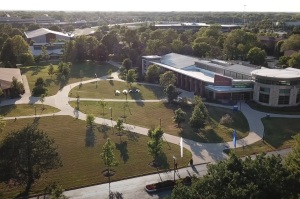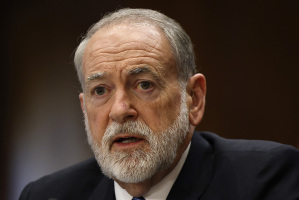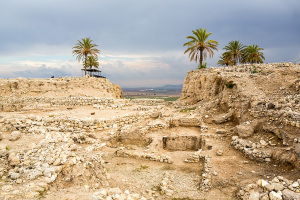Jesus Tomb 'Archeoporn' Resurrected
A panel of scholars and researchers revived the debate over the validity of claims presented in the controversial "Lost Tomb of Jesus" film nearly one year after it riled academic and Christian communities.
In "The Lost Tomb of Jesus," the filmmakers – "Titanic" director James Cameron and Jewish investigative journalist Simcha Jacobovici – claimed that archeologists had found the family tomb of Jesus Christ in Jerusalem, challenging most Christians' belief in the bodily resurrection of Jesus from the dead.
Most experts, however, including Christian theologians as well as secular scholars, rejected the film's claims and pointed to holes in the documentary, which drew more than 4 million viewers last March when it aired on the Discovery Channel. The work was called "archeoporn" by some religious scholars who found the film to be entertaining and exciting but lacking substance.
Nearly a year later, opinion among the panel of five scholars and researchers who met in Jerusalem this week ranged from "no way" to "very possible," according to a report by Time magazine.
In an attempt to lay the controversy to rest, James Charlesworth, professor of New Testament language and literature at Princeton Theological Seminary, had organized the Jan. 13-16 conference, bringing together over 50 archeologists, statisticians and experts in DNA, ceramics and ancient languages.
Charlesworth sided with two panelists who rejected the idea that Jesus had been buried in the tomb but didn't rule out the possibility.
"I have reservations, but I can't dismiss the possibility that this tomb was related to the Jesus clan," Charlesworth said, according to Time.
He said that the evidence suggests that the tomb belonged to a Jewish family from the time of Jesus and the names on the ossuaries are expressed the correct way as "Jesus, son of Joseph."
But like many scholars who had examined the ossuary, the professor had his doubts.
"The name on Jesus' ossuary was scrawled on, like graffiti. There was no ornamentation. And there should have been. After all, his followers believed he was the Son of God," Charlesworth noted.
In addition to Jesus, the filmmakers also suggested that Mary Magdalene was buried in the tomb, that she and Jesus were married, and that an ossuary labeled "Judah son of Jesus" belonged to their alleged son.
The scholars who analyzed the Greek inscription on one of the ossuaries after its discovery read it as "Mariamene e Mara," meaning "Mary the teacher" or "Mary the master."
Before the movie was screened, Jacobovici said that particular inscription provided crucial support for his claim. The name Mariamene is rare, and in some early Christian texts it is believed to refer to Mary Magdalene.
But having analyzed the inscription, Stephen Pfann, a textual scholar and paleographer at the University of the Holy Land in Jerusalem, published a detailed article last year on his university's Web site asserting that it doesn't read "Mariamene" at all.
The inscription, Pfann said, is made up of two names inscribed by two different hands: the first, "Mariame," was inscribed in a formal Greek script, and later, when the bones of another woman were added to the box, another scribe using a different cursive script added the words "kai Mara," meaning "and Mara." Mara is a different form of the name Martha.
According to Pfann's reading, the ossuary did not house the bones of "Mary the teacher," but rather of two women, "Mary and Martha."
"In view of the above, there is no longer any reason to be tempted to link this ossuary...to Mary Magdalene or any other person in Biblical, non-Biblical or church tradition," concluded Pfann, who made a brief appearance in the film as an ossuary expert.
Another archaeologist – Jodi Magness of the University of North Carolina at Chapel Hill – also questioned why Jesus, who is known to come from a poor family, would be found in a tomb for middle class and wealthy families.
Moreover, she noted last year that if for some reason his family could afford the tomb, his bones should be found in Nazareth not Jerusalem, according to the Washington Post.
Other arguments given by leading biblical scholars opposed to the film's claims include that the earliest followers of Jesus did not call him "Jesus, son of Joseph" and the body of James, the brother of Jesus, was buried alone near the temple mount – making it highly unlikely that the tomb in the film is Jesus' "family tomb." Furthermore, many scholars have said the filmmakers' arguments were based on circumstantial evidence of exceedingly common names of the time.
"My personal conclusion is that in no way can we say – with the conclusion postulated by the film – that the 'lost tomb of Jesus' is one in the same with the tomb in East Talpiot," said Duke University professor Eric Meyers, who was among the panelists at this week's conference.
Despite strong arguments against the "Lost Tomb of Jesus" claims, conference attendees decided that the tomb should be reopened and examined more carefully. The tomb site is currently sealed over with concrete in the garden of a suburban apartment building.





























